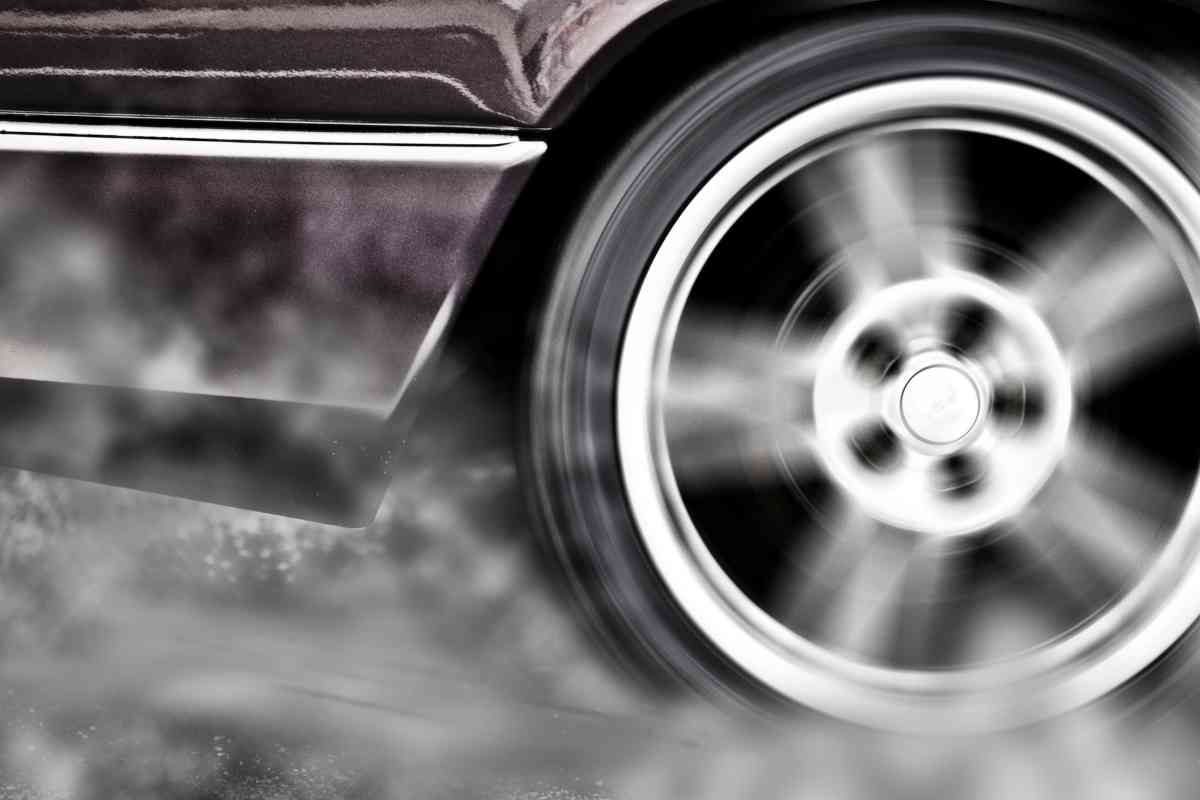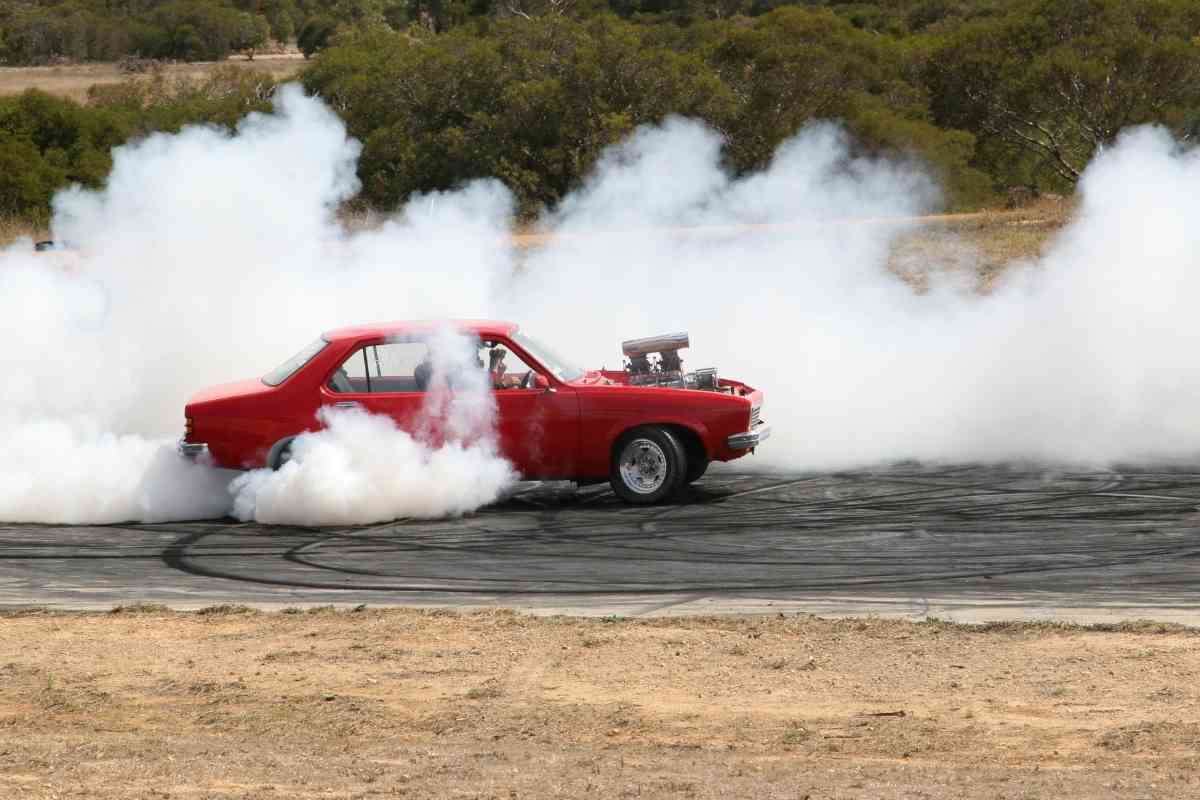Is It Illegal To Do A Burnout In Your Driveway? Find Out First!
Burnouts can be a fun display of your vehicle’s power. But there aren’t many places to legally do a burnout. Can you do a burnout on your own property? Some drivers enjoy the smell and sound of burnout, but those very sensations are part of what makes burnout illegal to do in public in the first place. Let’s explore if your own driveway is a safe alternative for burnout.

Can you do a burnout in your own driveway?
In most places, burnout is still illegal in your own driveway. While your city of area might cite different reasons, your neighbors will often think that burnout is loud and dangerous, even if you don’t move. We suggest contacting your local authorities.
We’ll dig in more to help you understand what burnout is, and what makes people think burnout is cause for concern in a private neighborhood. Keep in mind that not every place makes burnout truly illegal.
We’ve seen burnouts before in public places and will help you find laws that may work for or against you. We also understand both the want to try to do a burnout in your favorite sports vehicles as well as a lot of the reasons why they are illegal.
What is Burnout?
Let’s get a definition out of the way real quick. Burnout is defined as intentionally creating smoke and often noise by revving your engine and spinning the wheels while keeping your vehicle in place.
The result is your rubber tires rubbing hard against the surface, which creates a plume of smoke – which is literally your tires and the surface burning.
Technically speaking, burnout is done by turning off traction control and driving safety features in your vehicle. You can hold the brake down while pushing the gas pedal. You’ll want to gently release and push the brake pedal, and the wheels will start to spin.
Can you get in trouble for doing a burnout?
To most police jurisdictions, doing a burnout is considered the reckless operation of a vehicle. So yes, if a police officer catches you doing a burnout.

What happens if you are caught doing a burnout?
A law officer might write tickets for something else in regards to state and local law but can go under the broad definition of recklessness.
A ticket for recklessness violates similar laws to driving exceedingly fast and not just speeding -we are talking about driving 100 plus miles per hour. These tickers are not cheap and the first can be in excess of $500.
These tickets and legal issues can escalate into fines in excess of $100 and the potential loss of your license for over two months.
While you should take a close look at a ticket for doing a burnout, the kind of ticket may also require your presence in court.
This is unlike most speeding tickets, where you can go to court to attempt to talk about the speeding ticket and potentially get it removed. Your local authorities are asking you to speak to a judge at a predetermined date and time to gather further information from you and likely warn you about further consequences.
Are you allowed to do a burnout on your property?
While the property is yours (or at least the banks or landlords), it’s generally illegal to do a burnout in your own driveway because public safety laws can readily override property laws. While burnouts are fun, they can be rather dangerous regardless of where you do them.
A burnout requires an extraordinary amount of energy to build up in your car, and if you do it wrong, can result in a variety of safety issues, including your vehicle striking a person, vehicle, or property – and local authorities are trying to prevent injury or destruction.
Burnouts can also violate local noise and traffic ordinances, especially when done late at night or early in the morning. They are loud! Burnouts are also often extended, unlike individual fireworks, so some people might find the noise a bit scary.
While we do not advocate for the idea of doing burnouts, it’s also worth noting that unless a neighbor or person nearby hears or sees you doing a burnout, the police probably won’t know you did unless they happen to be watching.
Why is doing donuts illegal?
To be clear, “doing donuts” literally means driving in an uncontrolled circle. You’ve likely seen donuts as a victory “lap” at the end of a car race.
Doing a donut most often involves turning off traction control and accelerating hard while turning the steering wheel all the way in one direction. The result is a lack of traction that keeps the vehicle spinning.
Donuts don’t often result in a vehicle going especially fast but are still illegal because they come from the intentional loss of control of a vehicle, which can end in damage to property or bodies. Doing a donut is also more common because the vehicle doesn’t necessarily need to have lots of power like a burnout.
Are burnouts harmful to your car?
Anyone who has done burnouts on a regular basis also probably replaces their tires more often than they expect.
Since the smoke produced during a burnout is part asphalt and pavement and part tire rubber, it’s safe to say that a burnout definitely does harm your tires. It’s also possible to wreck your brakes and rotors while attempting to do hard acceleration and braking at the same time.
Are donuts harmful to your car?
Potentially, but not as much. Some drivers do donuts on ice and snow because it is easier to do on a traction-free surface. Since vehicles are designed to take turns, doing doughnuts might harm the tires from use, but otherwise, they are fairly safe for the vehicle itself.
Think about your driveway
Short of repaving, getting the marks from burnout and rubber is actually rather difficult. If you are thinking about selling your house or moving soon – or your landlord cares about the appearance of the driveway, you might be better off not trying!
Why are burnouts legal for professional drag racing?
Consider a race track a closed, somewhat controlled environment. They build nets and walls to keep people who are watching safe.
Your driveway nor street have the same setup, so it is considerably more dangerous for you to do in your driveway, much less when near people on the street. These places are also often well set up in the event of an emergency, like when cars go off track, or a piece of car flies away.
